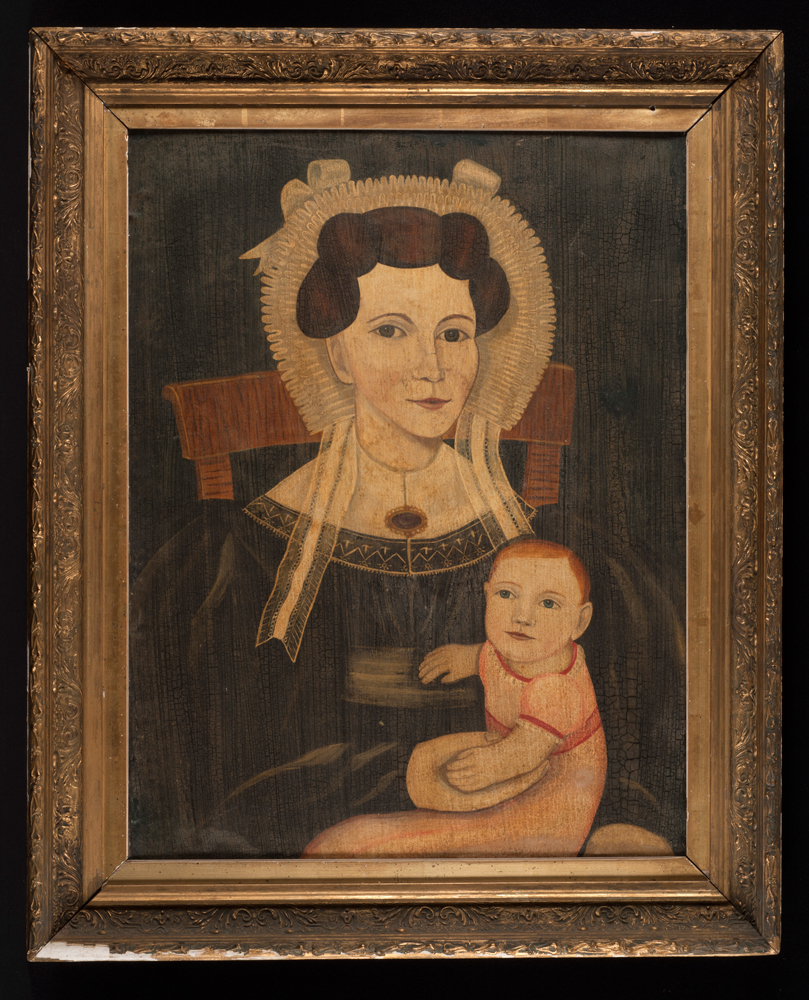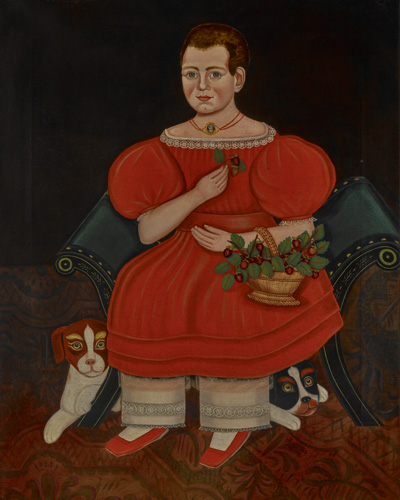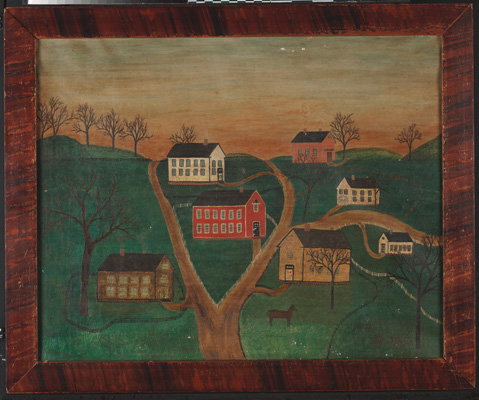Forging American Folk Art
Robert Lawrence Trotter (b. 1954) is an artist who needed to make a living and resented the fact that his work was not appreciated. He initially sold pastiches―paintings that generally imitated the style and character of folk art but were not intended to deceive. In the 1980s, however, after seeing genuine folk art reach record prices, Trotter began to create fakes and forgeries. He would purchase old paintings of little value that he stripped, repainted, artificially aged, and sometimes embellished with early wrought nails and antique frames. He also created extensive, but false, provenances to convince buyers they were purchasing authentic works by popular folk artists. His forgeries were much appreciated by collectors, some of whom elected to keep them even after they were identified as fakes. After the trial, the court insisted that Trotter’s works be indelibly stamped as forgeries before being returned to the owners.
Arrest and Conviction
Trotter was caught in a sting operation after disgruntled buyers Gene and Mary Anne Shannon discovered that the painting they had purchased was a fake and called the FBI. During questioning, Trotter urged the FBI to contact Marguerite Riordan as a character witness. But Riordan, a highly respected dealer, had also discovered that she had been fooled and provided the FBI with compelling evidence against him. Trotter eventually admitted to having sold fifty-two paintings to six art dealers and to consigning twenty-nine to auction houses in eleven states. He pleaded guilty to wire fraud and was sentenced to ten months in prison.
Only sixteen of the fifty-two paintings that Trotter admitted to selling had been located and identified at the time of his trial. The court ordered that four paintings be donated to Yale University Art Gallery and another to Buffalo State College to help in the future identification of Trotter’s work still in circulation.
This portrait of a woman and child, which Trotter painted about 1980, was owned by respected dealers Brian and Arlene Palmiter, who donated it to the Fenimore Art Museum so that others would not be fooled. It was not part of the trial and was not stamped as a fake.
You can see brush marks in the blanching on the surface of this painting. They were probably caused by a substance that created cracking and a false impression of age. Some areas of paint are lifting; where it has lifted, you can see that there was another painting underneath. The damage to the frame was also probably intentional.
Portrait of Mother and Child
Robert Lawrence Trotter; ca. 1980
Oil on canvas
Fenimore Art Museum, Cooperstown, NY, Gift of Brian Palmiter, acquired for the teaching collection as a known forgery
This painting was a crucial part of the arrest and conviction of Robert Lawrence Trotter. It is painted in the style of John Haberle (1856−1933), who was known for his accurate depiction of currency, envelopes, stamps, and other materials in a genre known as trompe l’oeil. The irony is that Haberle, himself, was warned by agents of the U.S. Treasury to “cease and desist painting greenbacks.”
Untitled, in the manner of John Haberle
Robert Lawrence Trotter; ca. 1989
Oil on canvas
Yale University Art Gallery 1990.40.4, donated by the U.S. Department of Justice, FBI
This portrait, purportedly of Elizabeth Goodwin, was sold by Trotter to Marguerite Riordan, a highly respected dealer in Stonington, Connecticut. After the painting was identified as a fake, Riordan was enraged and described Trotter to the FBI as “an incredibly slick and ruthless con man.”
Elizabeth Goodwin
Robert Lawrence Trotter; ca. 1988
Oil on canvas
Yale University Art Gallery 1990.40.1, donated by the U.S. Department of Justice, FBI
Painted by Robert Lawrence Trotter in 1985, this piece is signed “Sarah Honn” and dated May 5, 1866. After Trotter’s conviction, it was given to the Art Conservation Department at Buffalo State College. An extensive technical analysis was undertaken to characterize the materials and techniques used by Trotter. The resulting information is useful for the identification of other Trotter fakes.
Village Scene with Horse and Honn & Company Factory
Robert Lawrence Trotter; 1985
Oil on canvas
Courtesy Art Conservation Department, Buffalo State College
Bibliography
Sill, Gertrude Grace. “Art and Money: The Trotter Scam, or the Near Triumph of Greed.” Connoisseur, July 1990. https://ia800300.us.archive.org/21/items/connoisseurillus220maylon/connoisseurillus220maylon.pdf
Smith, Gregory D., James F. Hamm, Dan A. Kushel, and Corina E. Rogge. “What’s Wrong with This Picture?: The Technical Analysis of a Known Forgery.” In Collaborative Endeavors in the Chemical Analysis of Art and Cultural Heritage Materials, edited by Patricia L. Lang and Ruth Ann Armitage, 1−21. Washington, D.C.: American Chemical Society, 2012.




